Haven’t had a crack at a mahi mahi or two off the fish aggregating devices yet?
Why not?
It can be very easy to drive right past the FADS in search of your usual reef fish as the temperature starts to rise slightly, but as a novice to this species and different style of fishing, if there’s something holding you back, read on.
If you’re heading out for snapper on the 36-fathom lines, chances are you have everything set up anyway.
Producing a feed of tasty fillets and plenty of sport too, there’s been heaps of mahi mahi action on the Gold Coast FADs.
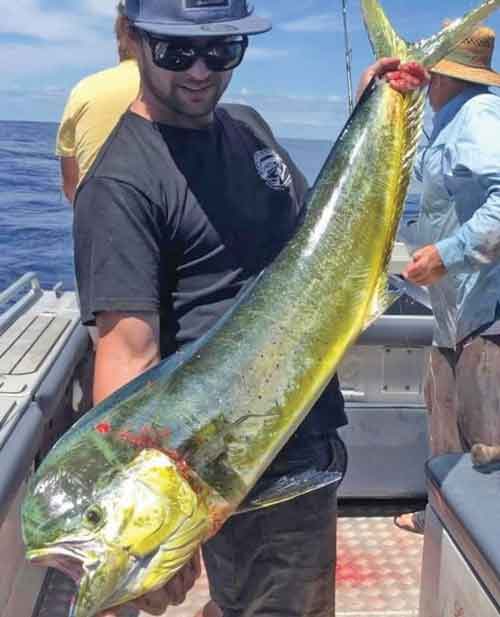
Most commonly associated with their bright gold flanks, electric greens and iridescent blue spots, mahi are also known for their instinctive aerial escape attempts during combat – particularly on light spin gear.
We’ll get to that soon… first let’s talk about the basics for catching mahi – also known as dolphinfish.
Mahi are one of the fastest growing fish in the ocean and favour a huge range of temperatures, which makes them a fairly predictable target for trolling lures, casting stickbaits or floating pilchard tails in a small berley trail.
The obvious first port of call is on the FADs that are dotted offshore between the 60-80m reefs.
GPS coordinates can be found at qld.gov.au/recreation/activities/boating-fishing/rec-fishing/fish-aggregating-devices/find-a-fish-aggregating-device
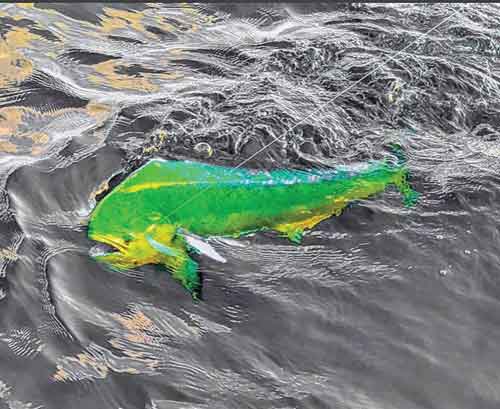
These act in two ways to attract target fish.
First, the chains and the large buoy grow weed, creating an ideal habitat for baitfish to seek refuge in open water, which of course opens up a food chain gathering point.
Second, mahi are a pelagic species and spend most of their active life near the surface scanning for food and migrating, so when they come across structure of any kind they will seek shade on particularly bright days.
In the past, I’ve always favoured floating baits into the FADs using pillie tails because that’s what I’ve set up for the day chasing other reef fish.
However, various slow pitch jigs and jerk shads mechanically cranked, stickbaits cast and sunk deep or even bucktails rolled through a school will get smashed.
Keep in mind, that as for any school of fish, they will shut down after too much disturbance and may need to be fired up again.
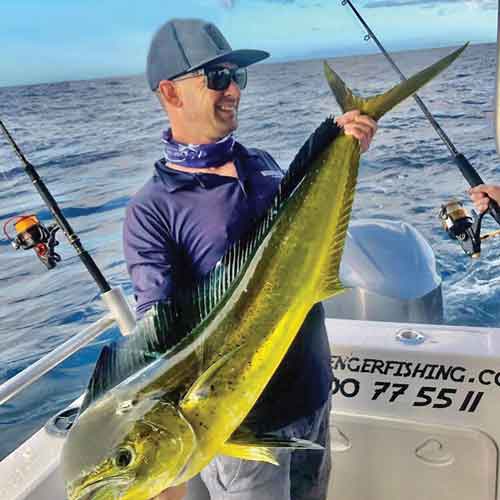
In an ideal world, you could catch live bait the night before and keep them in a river, or get lucky on the way out and get them as the sun comes up… but that’s unlikely.
Live bait are usually a winner, with a couple of free swimming yakka chucked in at the same time.
If not, then time to move on.
You’ll see plenty of anglers focus their efforts on quality over quantity, trolling 6-8” skirted lures or shallow divers, such as Rapala X-Raps, with 10-15kg plus bulls in mind.
And over the next couple of months, these won’t be too uncommon around the wider outskirts of the FADs and closer to the marlin grounds as the season progresses into warmer months.
If you’re not in any great rush to get to your next mark, trolling between spots is always worth a punt.
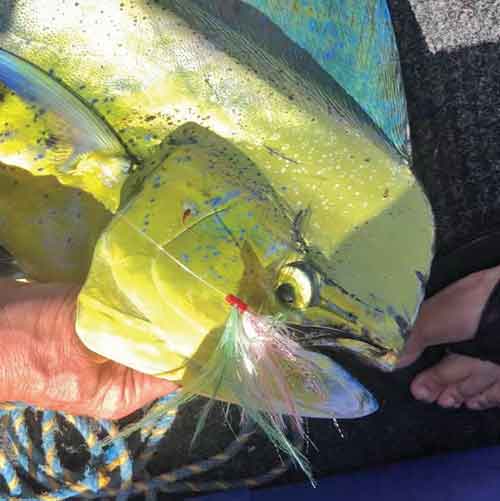
Typically, spin gear with nothing heavier than 30lb braid and 40lb leader.
Trace-wise, short 60cm 40lb fluorocarbon with a single 6/0 octopus beak is ideal.
Alternatively, 20-30lb monofilament with a small profile swivel is deadly for getting bait to sink slightly at the start of a drift.
Heavier leaders and traces will be springy and present unweighted bait very un-naturally, particularly if you want them to sink a little to get past the rat-sized models in the top couple of metres.
Gear sorted and time to bait up.
A pillie tail cut on the bias leaving the back side longer and the tail trimmed – as per the picture – is by far one of the best baits you can get.
Threaded once and a half hitch at the eye of the hook to hold everything straight is best because it allows for better hook exposure and less spin in the water against the current.
Quick flick into the current along with a couple of cubes from the head and that’s you fishing.
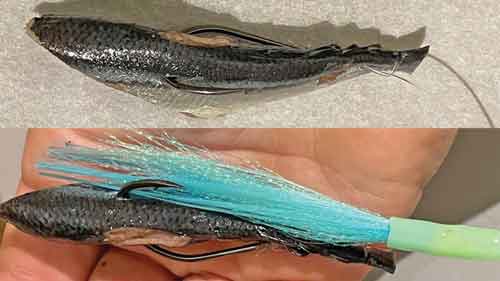
For even more appeal, a Suncoast Skutes Hollowcore Flasher can be used for added trigger points, which generally has more success on larger models.
Particularly fished a little deeper by dropping boat side and feeding a bit of line to sink before the current takes it.
Keep it feeding out at a slightly faster rate than the current and your bait should stay fairly deep, before tension on the line starts to cause the bait to rise again as you drift past the FAD.
No takes?
Retrieve steadily, new bait and repeat the drift process, taking care to abide by boating etiquette if you are taking turns drifting with other boats.
Deploying a bait seems fairly simple, though it is often very tempting to cast it far out to the side or towards the FAD.

As long as there isn’t too much slack line, this is generally fine.
However, feeding line out through your fingers on an open bail arm or Baitrunner leaves you in better stead for setting hooks once a mahi has picked up your bait and is running with it – similar to snapper fishing and feeding out floating bait.
The main difference is that striking often pulls hooks, unless they are gut hooked.
This is when single hooks are brilliant because you simply cut them off at the chafing and tie a new one on for quickness and safety – these fish cause a bit of a riot on the deck.
To finish off with a bang… club them and you’re done, and the fish is done.
And I’m done… for now.
Happy fishing everyone.
 Bush 'n Beach Fishing Magazine Location reports & tips for fishing, boating, camping, kayaking, 4WDing in Queensland and Northern NSW
Bush 'n Beach Fishing Magazine Location reports & tips for fishing, boating, camping, kayaking, 4WDing in Queensland and Northern NSW








